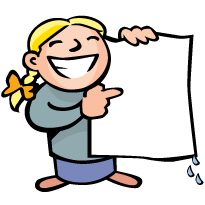Boston Children's Museum
308 Congress Street, Boston, MA 02210
617-426-6500
© Boston Children’s Museum 2025
Website Design by Jackrabbit
Along with the chance for children to express themselves creatively, paper making presents a great opportunity to talk about recycling. And children can use the paper they create for other activities in this curriculum, like paper marbling and print making.
VIEW ACTIVITY
Children’s bodies are undergoing constant change. By getting to know their own bodies better, these changes can be less mysterious. And a child who is in tune with their own body can use all of their senses as tools as they explore and try to understand the world around them. This activity helps children learn more about their sense of sight.
VIEW ACTIVITY
Now that your students have tried all of the Tops activities and experimented with the size, weight and other variables involved in top design, they can use everything they’ve learned to create the ultimate top. This activity also gives students a chance to design how their top will look by drawing or coloring it with markers, colored pencils, crayons, etc.
VIEW ACTIVITY
Team storytelling encourages creative writing and practice of written language. It also helps children learn how to write clear sentences and paragraphs that develop a central idea, and how to be thoughtful about the audience and purpose of written material.
VIEW ACTIVITY
Now that children have a hang of the process, it’s time to let their creativity loose. This is an open-ended activity, where children will create their own ice cream recipes, using any ingredients they would like. They will then name their new ice cream recipe and create a print “advertisement” for it. This activity is a great opportunity for you to assess what your students learned last time—do they understand the process? How much of each ingredient should they add to get just the right flavor, color or sweetness?
VIEW ACTIVITY
Some concepts can be tougher for children to grasp if they just read or hear about them. When children are engaged in learning by using their own bodies as tools, not only can some concepts be more readily understood, but kids can better get to know their own physiology as well. Sound, waves and vibrations are some of the concepts children will experiment with in this activity.
VIEW ACTIVITY
Using small drinking glasses filled with different amounts of water, you can give children direct experience with resonance and vibration as well as musical expression.
VIEW ACTIVITY
Along with all of the literacy benefits to having children write and act in their own plays, in this activity they will also learn to read, listen to and tell stories; to work effectively and cooperatively in an ensemble; to create a play with a beginning, middle and end based on an original idea; and to plan, improvise and write or record a play that includes the “five W’s”: who, what, where, when, and why. And by introducing children to Chinese shadow puppet history and/or stories, they will grow to understand the visual arts in relation to history and cultures.
VIEW ACTIVITY
Wherever you live, a surprising array of living things occupies the same space. In the city, in the country, in the suburbs…many species of bird, mammal, reptile, amphibian, insect and other organisms can be found if you take the time to look. Giving kids the chance to do an inventory of these creatures not only familiarizes them with living things and classification, but instills in them a sense of place and an understanding of and appreciation for their home environment.
VIEW ACTIVITY
Having kids advertise their new creations will help them work on literacy and art skills, and also will cause them to think about the unique attributes of their soda. This kind of work is great for helping to develop critical skills like observing, distinguishing properties of materials, etc.
VIEW ACTIVITY